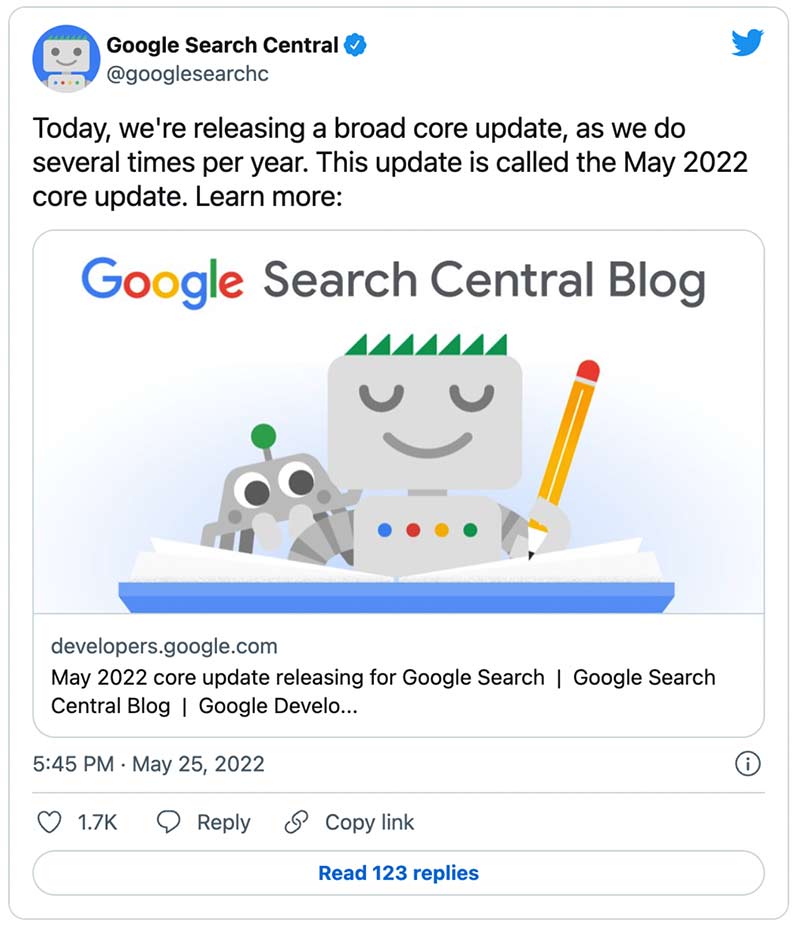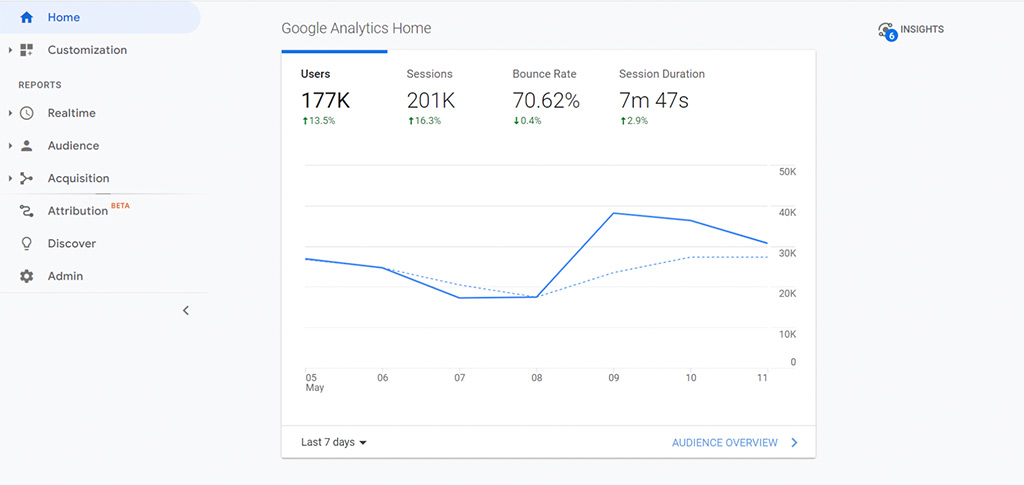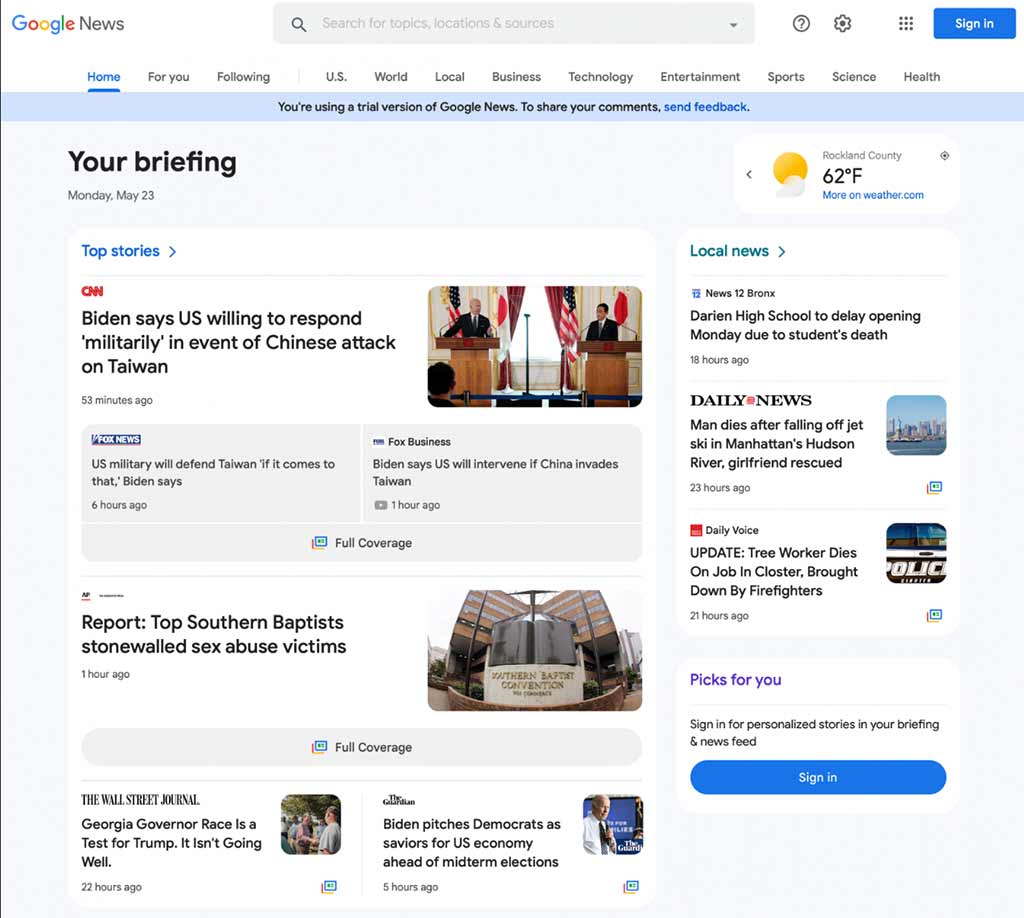How are your goals looking as we start entering the second half of the year? If you need an edge, we’ve got the case studies, guides, and news items that will give you that..
This month’s case studies will give you the data you need to stay ahead. You’ll learn how to use SEO to win at affiliate marketing, what 23 million internal links can tell you about best practices, and some surprising results from recent tests.
Next, the guides will give you some expert analysis on how to adapt to both the May 2020 Core Update, and the big Product Reviews update from March. Also, you’ll learn about 100+ tools that work as free alternatives.
Finally, you’ll get a quick rundown of news headlines you can’t miss, including how Google started trialing a new feature.
Wirecutter SEO Case Study: 5 Ways To Win At Affiliate Marketing
https://ahrefs.com/blog/wirecutter-seo-case-study/
Michal Pecánek brings you some top insights from a huge case study of Wirecutter’s SEO success. It’s hard to avoid Wirecutter if you’re in the affiliate space. It’s one of the largest review sites in the world, with more than 12 million organic clicks a month.
The case study looks at how Wirecutter achieved this powerful position and how affiliate marketers (or any SEO focused on reviews) can emulate their success.

For example, Michal shows you how Wirecutter maintains excellent E-A-T signals on every important piece of content. You’ll learn how the website does this through authoritative “why you should trust us” sections, appropriate backlinks, and prudent monetization warnings.
In the later insights, you’ll also find out how Wirecutter maximizes the user experience, leverages category pages, and keeps its content fresh. Every insight is well explained with examples you can use to take the same steps on your own site.
One issue Michal covers is the importance of internal links, and you can get even more information on that in the following case study. You’ll find out what millions of internal links can tell you about best practices for linking on your sites.
23 Million Internal Links – A Google SEO Case Study
https://zyppy.com/seo/internal-links/seo-study/
Cyrus Shepard brings you this comprehensive look at internal links in action. The study covers 23 million links distributed across nearly 2,000 websites. In this article, Cyrus shares essential correlations that he has pulled out from the study that you can use to help you improve your internal linking.

First, he cautions you that these are only correlations. Correlations are not always causation, but what you learn may point you toward relationships that Google will never formally explain.
Cyrus identified many intriguing correlations, including…
 Having internal links was associated with more traffic (to a point)
Having internal links was associated with more traffic (to a point) Anchor text variations were even more strongly associated with search traffic
Anchor text variations were even more strongly associated with search traffic Pages with at least one exact match anchor had at least 5x more traffic than pages without
Pages with at least one exact match anchor had at least 5x more traffic than pages without
The complete case study includes several more findings and more detail about each. You’ll also find some analysis at the end to help you apply it.
The final case study of the month also has a lot of actionable advice. It’s a quick rundown of 5 studies that had counterintuitive results.
5 Surprising SEO Test Results
https://moz.com/blog/5-surprising-seo-test-results
Emily Potter brings you some tests that may contradict the conventional wisdom accepted by many SEOs. These tests were performed on client accounts, so it’s not data that you’ll find elsewhere.

The tests covered decisions that will be familiar to you if you often work with SEO clients. As an example, in one of the first tests, the clients implemented a way to force Google to show only custom meta descriptions. It worked, but it turned out visitors preferred the generated ones.
In another example test, the team wanted to know the consequences of adding prices to title tags for some product pages. While searchers often reward more information, this test saw noticeably lower traffic for all pages involved.
In a final example, the team assessed the impact of adding keyword-rich descriptions to alt-text. This also resulted in no detectable impact, though Emily shares some good reasons you should do it anyway.
Check out the full article for more tests and their surprising results. Now, let’s move on to the guides for the month. First, you’ll find out how SEOs are interpreting the recent May 2022 Update.
Google Core Update May 2022 First Analysis
https://www.sistrix.com/blog/google-core-update-may-2022/
Steve Paine offers you a pro’s breakdown of the year’s first Google Core Update. His analysis gives insight into how the update is playing out, and what steps you may need to take to stay ahead.

You’ll learn more about this update and Google’s announcement in this month’s news section. For now, let’s focus on what the early data can tell us about winners and losers.
The major trends suggest that video sites were among the biggest winners. Sites like YouTube and TikTok were highly elevated over text results for various SERPs. Highly-specialized knowledge sites also won out over dictionary and Wikipedia-style sites.
Steve closes out his guide with advice to help you determine which pages need to be improved to comply with the new changes. He also shows you how to identify the pages that are working well so you can apply their on-page SEO rules to other pages.
Check out the complete guide for an extensive list of the winners and losers and how much change they experienced. Next, you’ll learn how you can apply what SEOs have learned from March’s Product Review Update.
Analysis Of Google’s March 2022 Product Reviews Update (PRU) – Findings And Observations From The Affiliate Front Lines
https://www.gsqi.com/marketing-blog/google-march-2022-product-reviews-update/
Glenn Gabe brings you this breakdown of the 3rd Product Review Update that started rolling out near the end of March. In it, he breaks down the trends that have appeared as the update has been finalized.

The things he has learned have been organized into different insights, each with an accompanying explanation. Most of his recommendations are directed toward affiliate marketers, but any SEO with a product site can benefit.
The insights include:
The rising adoption of linking to multiple sellers
The benefits of video, even when it’s not original
The risks of shifts in intent
The perils of ignoring user feedback
The shaky and inconsistent power of links
Glenn also referenced some strong evidence that sites may not see the actual effect of this update for months more to come. He identified a cut-off point that may be affecting sites that made content upgrades too close to the update’s rollout. Your site may need to endure a period of recrawling and reindexing to be graded on the new best practices.
This guide should give you all the early steps to start making improvements to review-style content. Tools can help you complete a lot of SEO work faster, and our next guide will introduce you to 100+ free ones.
110 Top SEO Tools That Are 100% Free
https://www.searchenginejournal.com/top-free-seo-tools/302553/#close
Jon Clark brings you this handy resource you can refer to the next time subscription fees strain your budget. He’s collected more than a hundred different tools that can help you out in a pinch.

The tools are organized into different categories, so you can quickly jump to the one that solves your problem. The categories include:
 Analytics
Analytics Keyword Research
Keyword Research Links
Links Local SEO
Local SEO Mobile SEO
Mobile SEO On-page SEO
On-page SEO Research
Research Rank Checking
Rank Checking Site Speed
Site Speed
Each category has around ten different tools, and Jon has taken the time to explain what sets each tool in the same category apart. These tools, alongside those we recommend in our video below, will help you get ahead without breaking the bank.
Now, let’s move on to the news. We’ll start with Google’s official announcement on the core update.
May 2022 Core Update Releasing For Google Search
https://developers.google.com/search/blog/2022/05/may-2022-core-update
Danny Sullivan brings you this official announcement from Google Search on the release of the recent 2022 Core Update. Unlike our last item on this topic, this one will cover what Google has divulged about its process and intentions.

The update was officially announced on May 25th. Google’s stated objective was to refine search results further and make them “more helpful and useful for everyone.” What we saw in practice further reinforced Google’s E-A-T standards and some additional focus on rewarding video content.
Google updated the post on June 9th to announce that the rollout was complete. This does not necessarily mean an end to changes for sites affected by the update.
Google has reported that some factors are designed to steadily weigh more in the algorithm over months rather than right away.
One potential factor SEOs can’t stop thinking about lately is User-Generated-Content (UGC). The following news item examines what Google had to say about its role as a ranking factor.
Is User-Generated Content (UGC) A Google Ranking Factor?
https://www.searchenginejournal.com/ranking-factors/user-generated-content/#close
Kristi Hines brings you this great collection of references that cover UGC.
As you may already be aware, UGC is content created by users, fans, and critics across the internet. This type of content (taking the form of blog comments, forum posts, and reviews) can be plentiful, but is it useful?

Kristi organized the evidence, starting with some direct answers from the Google Team. On multiple occasions, Google has stated that spammy content on your site is a risk even if it was created or published by users.
In a statement in 2020, Google employee John Mueller encouraged website owners to ensure that any user-generated content “meets your standards for publishing content on your website.” He also suggested that Google doesn’t differentiate between your content and UGC when assessing pages.
In the end, Kristi argues that there is clear evidence that UGC is a ranking factor, if only because your content is a ranking factor and Google doesn’t distinguish between the two. UGC can improve the fitness of pages without content, and it can make good pages spammy if ignored.
In the final article for the month, Google has some news about news.
New Google News Trial Being Tested
https://www.seroundtable.com/new-google-news-trial-33466.html
Barry Schwartz brings you some proof that Google is experimenting with a new News Portal. As he clarifies early in the article, the tests only appear in some searches and browsers. He took screenshots to show you what to expect in the coming months.

The redesign has been praised by Barry and Twitter commenters alike as more news-like and streamlined. The SEO implications of this update are difficult to predict until we understand more of the changes that will be coming to the similar Discover feature.
If there are any new updates regarding reaching Google’s news searchers, you can be confident you’ll find out about it in an upcoming roundup.
Got Questions or Comments?
Join the discussion here on Facebook.


